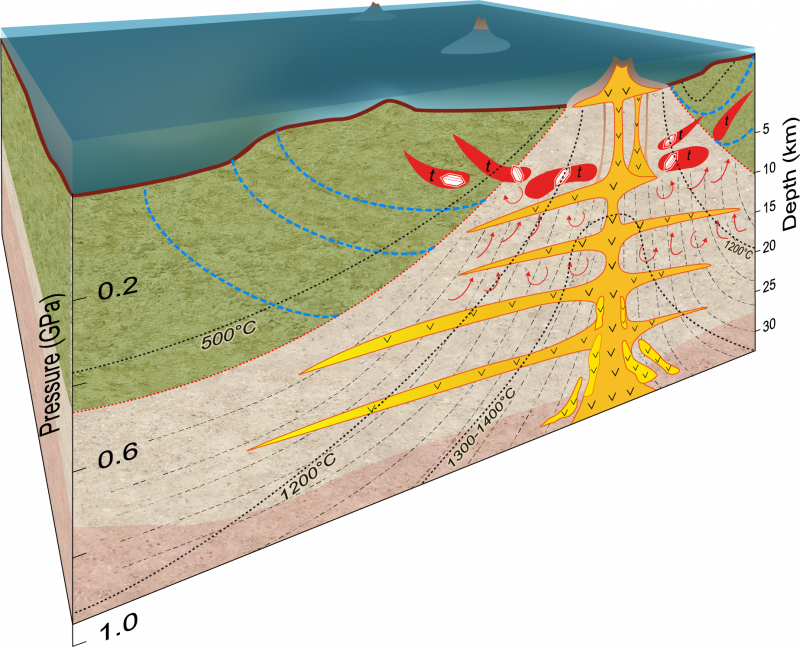A simple way to make the continental crust
The earth’s continental crust is characterized by a composition strongly enriched in Si, Al and alkaline metals (a ‘felsic’ composition). But what is the origin of this crust? This question has always fascinated scientists but also the general public, especially since there is no terrestrial rock dating from the Hadean, that is to say the first 500 million years of our planet’s history.
A multidisciplinary study involving French, German, American and Russian researchers has established the physicochemical conditions and ingredients necessary to form the very first felsic crust on Earth and, probably, on Mars.

Researchers conducted laboratory experiments to reproduce magma-rock-fluid interactions at conditions that prevailed on our planet more than 4 billion years ago. These experiments demonstrate that the contact of serpentinites (hydrated peridotites) and basaltic magma at a temperature and pressure corresponding to depths of 6 km on Earth can produce magmas of felsic composition that could be the prototype of the first continental crust on Earth and Mars. These processes would have taken place shortly after the solidification of the upper layer of these planets – which were originally covered by a magmatic ocean of identical composition to that of the mantle, i.e. of peridotitic nature. They follow the interaction of this peridotitic crust with the primitive liquid ocean. Thus, this model of interaction between serpentinized rocks and basaltic magmas proposes a simple and efficient recipe for the fabrication of felsic crust in a geodynamic context that does not require plate subduction – a paradigm that is commonly accepted in most existing geodynamic models.
Further Resource
- Scientific Publication : Hydrated Peridotite – Basaltic Melt Interaction Part I: Planetary Felsic Crust Formation at Shallow Depth – Frontiers in Earth Science by Borisova A.Y., Zagrtdenov N.R., Toplis M.J., Bohrson W.A, Nedelec A., Safonov O.G., Pokrovski G.S., Ceuleneer G., Melnik O.E., Bychkov A.Y., Gurenko A.A., Shcheka S., Terehin A., Polukeev V.M., Varlamov D.A., Chariteiro K.E.A., Gouy S., de Parseval P., https://doi.org/10.3389/feart.2021.640464
IRAP Contact
- Michael J. Toplis, michael.toplis@obs-mip.fr






